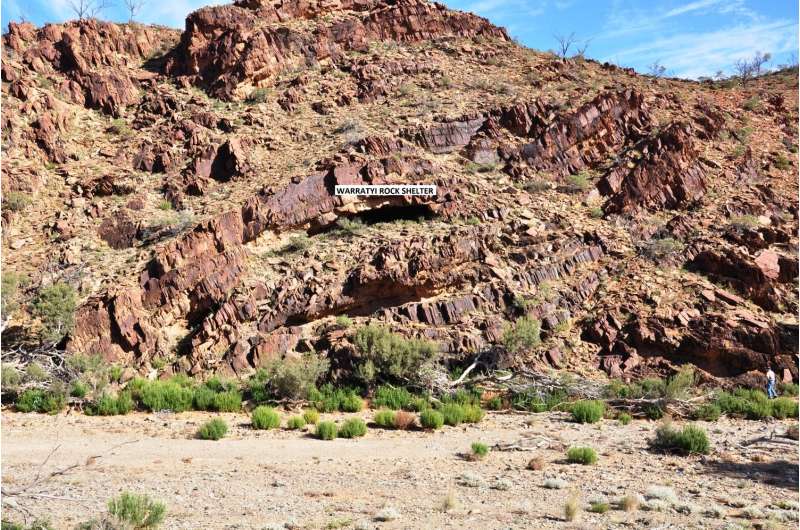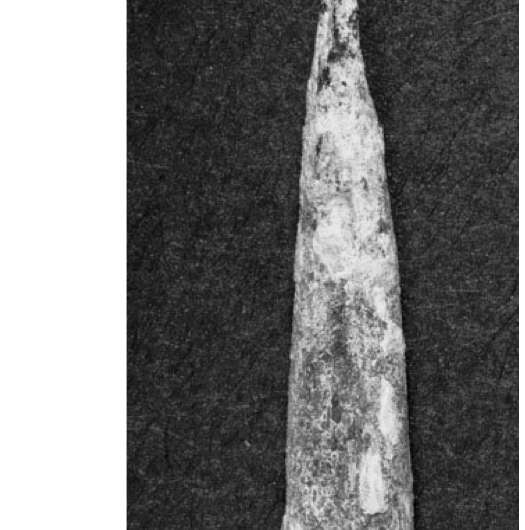Humans settled earlier in Australia's remote outback

Humans started to settle inland Australia 10,000 years earlier than previously believed, scientists said Thursday, after discovering thousands of artefacts and bones in a rock shelter in the remote outback.
People are thought to have arrived in Australia around 50,000 years ago. But the timing of their settlement in the arid interior, their use of tools and their interaction with ancient animals has been under debate.
The researchers said the discoveries in the Flinders Ranges of South Australia, 450 kilometres (280 miles) from the state capital Adelaide, showed that humans occupied the site from 49,000 to 46,000 years ago.
"We present evidence from Warratyi rock shelter in the southern interior that shows that humans occupied arid Australia by around (49,000 years ago), (10,000 years) earlier than previously reported," the report published in the journal Nature said.
The objects recovered from layers of sediment also represented the earliest-known use in Australia of technologies such as bone tools (40,000 to 38,000 years ago) and pigments like red ochre (49,000 to 46,000 years ago).
"It complements the work that has been done on Australia's coasts. It fits in with this threshold of dates... between 45,000 and 50,000 (years ago)," research archaeologist Giles Hamm from South Australia's La Trobe University, the study's lead researcher, told reporters.
"What is different about it is it's the southern-most oldest site in the continent ... it shows that people are moving very quickly around the continent and in the interior part of the continent.
"If people are coming in at 50,000 (years ago), it means that people are moving in a whole range of directions perhaps. And we've got some new genetic evidence that might be also adding data to that question."
The study—which also involved the University of Adelaide, Flinders University and Clifford Coulthard from the Adnyamathanha Traditional Lands Association—recovered 4,300 artefacts, three kilogrammes (6.6 pounds) of bones, ochre and plant matter.
A recovered bone chunk was identified as coming from a Diprotodon optatum, the largest-known marsupial, while an eggshell was linked to a giant extinct bird, suggesting that humans were interacting with ancient animals, megafauna expert Gavin Prideaux from Flinders University said.
"Humans evidently lived alongside these animals and hunted them, so the idea that there wasn't any interaction between people and these animals is put to bed now," Prideaux added.

More information: Giles Hamm et al. Cultural innovation and megafauna interaction in the early settlement of arid Australia, Nature (2016). DOI: 10.1038/nature20125
Journal information: Nature
© 2016 AFP





















